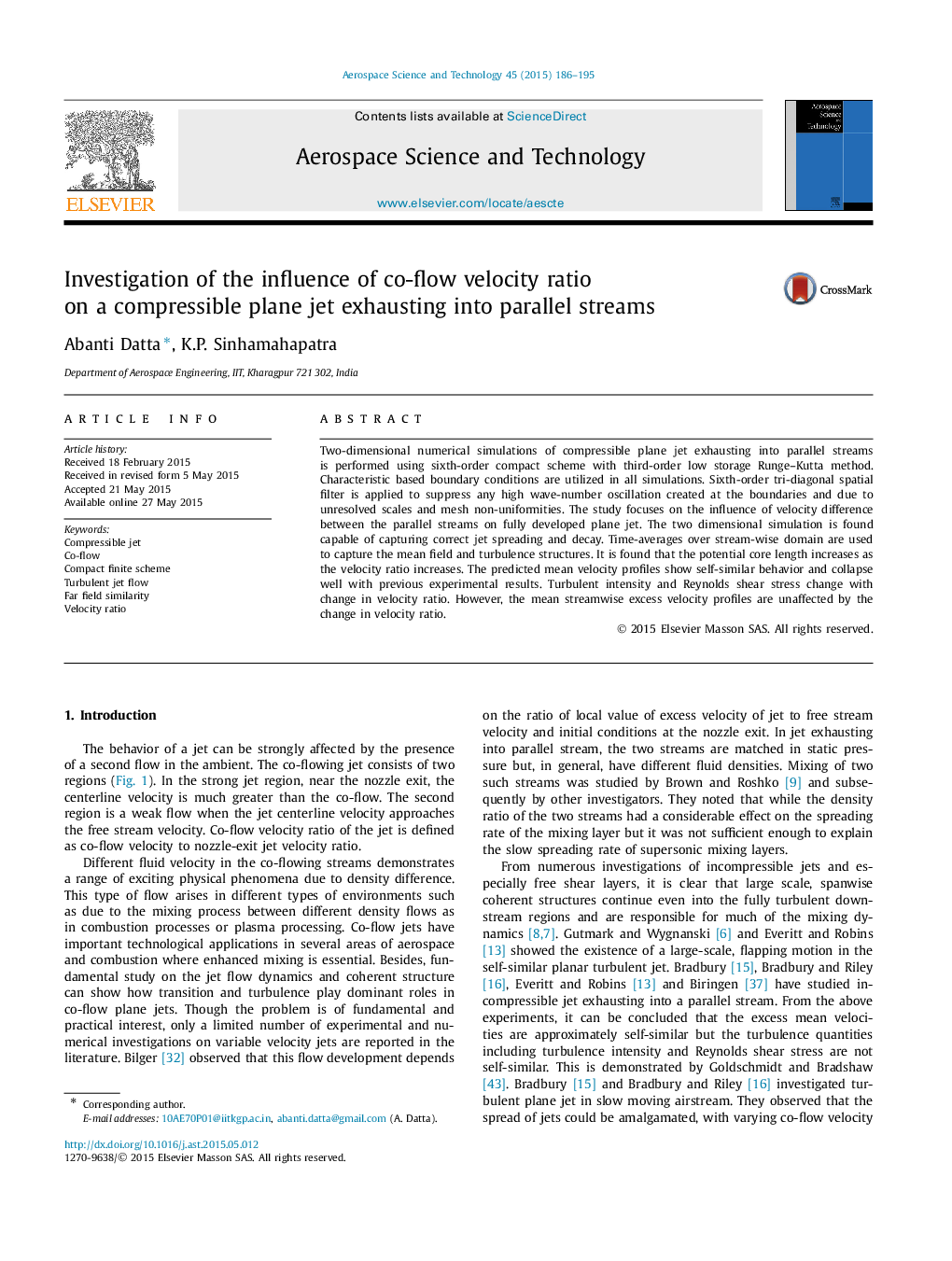| Article ID | Journal | Published Year | Pages | File Type |
|---|---|---|---|---|
| 1717806 | Aerospace Science and Technology | 2015 | 10 Pages |
Abstract
Two-dimensional numerical simulations of compressible plane jet exhausting into parallel streams is performed using sixth-order compact scheme with third-order low storage Runge-Kutta method. Characteristic based boundary conditions are utilized in all simulations. Sixth-order tri-diagonal spatial filter is applied to suppress any high wave-number oscillation created at the boundaries and due to unresolved scales and mesh non-uniformities. The study focuses on the influence of velocity difference between the parallel streams on fully developed plane jet. The two dimensional simulation is found capable of capturing correct jet spreading and decay. Time-averages over stream-wise domain are used to capture the mean field and turbulence structures. It is found that the potential core length increases as the velocity ratio increases. The predicted mean velocity profiles show self-similar behavior and collapse well with previous experimental results. Turbulent intensity and Reynolds shear stress change with change in velocity ratio. However, the mean streamwise excess velocity profiles are unaffected by the change in velocity ratio.
Related Topics
Physical Sciences and Engineering
Engineering
Aerospace Engineering
Authors
Abanti Datta, K.P. Sinhamahapatra,
